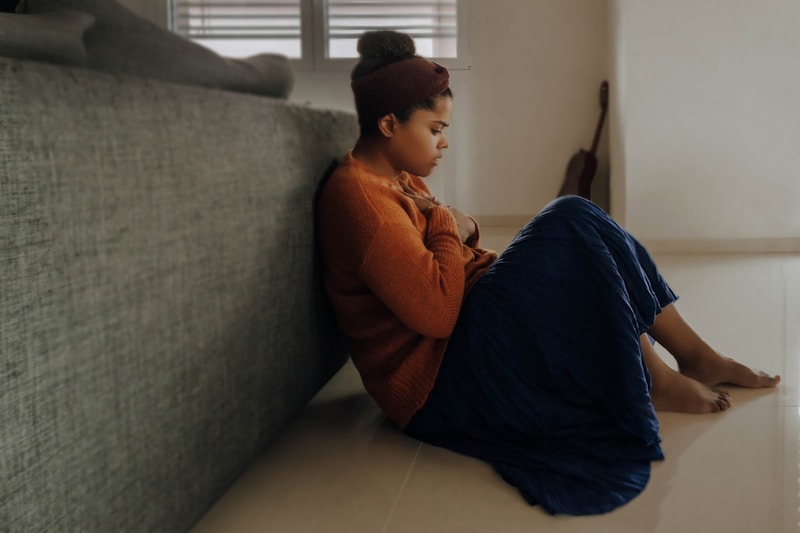Yoga is a powerful natural healer and has long been known to be particularly beneficial for easing the often debilitating symptoms of anxiety and depression. After all, its very essence is ‘chitti vritti nirodhah’ – to calm the fluctuations of the mind stuff.
Gently taking the focus away from our overactive ‘monkey minds’ and into the physical body can be very useful for bringing a sense of calm and relief and allowing those experiencing the conditions to better navigate the challenges they face during periods of anxiety and depression.
There are certain asanas that are particularly beneficial in soothing an agitated nervous system. By opening up our nadis (or energy channels) they can leave us feeling rejuvenated and positive and show us some light amidst the darkness of these conditions.
Yoga helps soothe anxiety and depression on multiple levels: by stimulating the relaxation response, the body’s stress hormones — like cortisol and adrenaline — reduce and we begin to feel calmer and more positive. Additionally, the physicality of the asanas release endorphins, natural hormones in the body which create a feeling of well-being. Even simple pranayama exercises can soothe, by focusing on the breath and the physical body and also by reducing physical tension, all of which works to de-stress us. We feel calmer, lighter and clearer.
See Also: Vinyasa Your Anxiety Away
Our Choice Poses For Anxiety
In your next home practice, or even after a practice at your regular studio, try incorporating some of these poses into your regular routine:
1. Half Moon Pose (Ardha Chandrasana)
Focussing on stability in balancing postures, particularly the more complex ones such as this, are helpful in taking the focus away from the mind and into the body. It’s also a heart opening pose which opens the heart chakra and promotes self love and compassion. When depressed, the natural tendency is for the body to hunch over, so this works the other way and opens us up to receiving more positive energy and ways of thinking.
2. Legs Up the Wall (Viparita Karani)
This is a deeply soothing pose that can be particularly effective for winding down before bed. This asana is also great for insomnia and disturbed sleep — which is often a symptom of depression, anxiety and stress. It helps to promote relaxation via the re-routing of the circulation of the brain and activates the relaxation response.
3. Headstand (Sirsasana)
The skill involved in preparing for and holding this posture requires a certain level of concentration — one which takes the focus away from the mind and into the physical body. It also floods the brain with fresh blood and oxygen and of course strengthens the body which can help to a sense of self-empowerment.
4. Child’s Pose (Balasana)
This classic resting pose is immediately calming and is one of the quickest and most effective ways to feel grounded and centered. The focus on the breath can be very reassuring and the requirement to block out external stimuli allows the body to detach from anxious thoughts. Balasana also opens up the back and hip — two areas where many people carry negative emotions — and allows stagnant energy to start flowing again.
See Also: First Steps To Demystifying Prāna
5. Warrior 2 (Virabandhrasana II)
By its name alone Warrior 2 invokes a sense of strength. It also requires a certain level of focus that can make us feel empowered and identify with something beyond the feelings of unease that are symptomatic of depression and anxiety.
3 Bonus Practices for Anxiety and Depression
Alternate nostril breathing (or nadi shodhana) is gentle yet powerful and balances the left and right hemispheres of the brain as well as cleansing the energy channels. Nadi is a Sanksrit word meaning ‘channel’ or ‘flow’ and shodhana means ‘purification’. Nadi Shodhana also ensures that oxygen-rich blood gets to the brain, which in turn gives us an energetic lift.
Not strictly an asana but I would really recommend Yoga Nidra for achieving a deep state of peace in a relatively short amount of time. Meaning ‘yogic sleep’, Yoga Nidra too can be a wonderful way to soothe the mind, releasing tension and stress and experience what the Yoga Nidra Network calls:
…a state of consciousness in which we are invited to re-encounter the essential truth of who we really are, to experience deep freedom.
It’s also worth noting that essential oils can be wonderfully calming and a great addition to yoga in soothing anxiety and depression. Lavender oil has been cultivated throughout history for its relaxing and antidepressant qualities in treating mood imbalances. Personally, I love organic skin care brand Skin + Tonic’s Calm Balm — it’s a lovely mix of lavender and chamomile and fantastic to rub into the pulse points, below the nose and the third eye to bring immediate calm.
And Breathe…
Due to the very nature of anxiety and depression, it can be hard to motivate one’s self to practice yoga. Yet even five minutes can have wonderful effects that can really turn the day around — testament to the divine power of yoga as one of the world’s most precious natural healers.
See Also: 5 Motivational Tips To Starting Yoga When You’re Depressed













